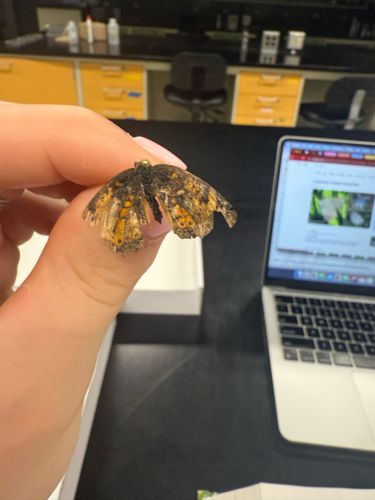Pearl Crescent
Scientific Name: Phyciodes tharos
Order & Family: Lepidoptera (Butterflies and Moths), Nymphalidae (Brush-footed Butterflies)
Size: Wingspan typically ranges from 2.5 to 3.8 cm (1 to 1.5 inches).

Natural Habitat
Widely distributed in open, sunny areas such as fields, meadows, roadsides, pastures, forest edges, and clearings. Can also be found in suburban gardens.
Diet & Feeding
Adult Pearl Crescents feed on nectar from various flowers, including asters, coneflowers, clover, and milkweed. Caterpillars primarily feed on the leaves of asters (Symphyotrichum species), especially smooth blue aster (Symphyotrichum laeve).
Behavior Patterns
These butterflies are active during the day and are known for their fast, erratic flight close to the ground. Males often perch on low vegetation to watch for females. They produce multiple broods per year in warmer climates. Caterpillars are gregarious when young and feed on the underside of leaves, often skeletonizing them. They overwinter as partially grown larvae.
Risks & Benefits
Pearl Crescents pose no risks to humans. As pollinators, they contribute to the reproduction of various flowering plants. Their caterpillars can cause minor defoliation of aster plants, but typically not to an extent that causes significant damage to crops or ornamental plants. They are an important part of the food web, serving as prey for birds and other insectivores.
Identified on: 10/3/2025